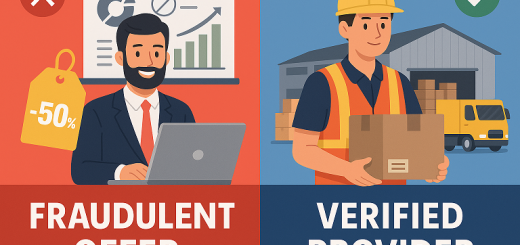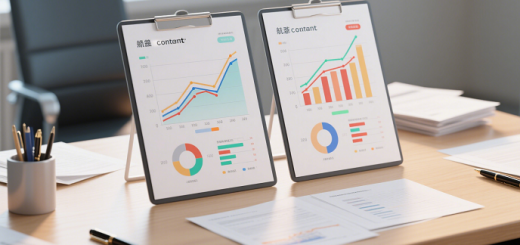Hassle‑Free Shipping from China: Your Ultimate Consolidated Freight Solution (2025 Guide)
Introduction
In 2025, whether you’re a European ecommerce reseller or a U.S. small‑brand importing stock from multiple factories in Shenzhen or Ningbo, navigating logistics from China has become increasingly complex, costly, and risk‑laden. With the U.S. ending its de minimis exemption for Chinese origin packages on May 2, 2025, low‑value shipments now face full customs duties—or fixed fees up to 200 USD per parcelFreightos+6AP News+6gortofreight.com+6The Verge+10供应链潜水+10Investopedia+10.
Against this backdrop, consolidated shipping—via shared or full containers, LCL (Less‑Than‑Container‑Load), or air pallet consolidation—offers a streamlined, more economical alternative to direct courier or multiple parcel shipments. This guide shows you how to ship from China faster, cheaper, and with less paperwork, while minimizing customs headaches and damage risk.
1. Why Consolidation Is Now Essential
A. U.S. De Minimis Rule Is Gone
Pre‑May 2025, e‑commerce imports under 800 USD enjoyed duty-free entry. That loophole ended specifically for Chinese/HK shipments on May 2, 2025, and globally on August 29, 2025华尔街日报+1WIRED+1. Today, consumers and sellers alike face up to 120–145% duty or flat fees. Direct parcel delivery now triggers a customs entry each time—consolidated freight avoids that completely.
B. Consolidation Requires Only One Customs Entry
Whether you’re shipping 10 or 50 cartons, consolidating lets you declare once per container (HBL underneath a master…) or air manifest. That drastically reduces broker fees, HDMF/MPF (in U.S.), and audit risk.
C. Volume Leverage Drops Freight Rates
- LCL (per cubic metre) via major Chinese ports runs $60–90/CBM to U.S. West Coast and up to $100/CBM to East CoastAP News+1YouTube+1Forest Shipping+7dantful.com+7Maple Sourcing Ltd.+7.
- Full/Shared 20′ container rates hover around $1,800–2,200; 40′ HQ at $2,500–4,000 depending on lane and seasonFreightostonlexing.com.
Once your volume hits ~10–15 CBM/month, your landed cost per box drops sharply.
D. Air Pallet Consolidation: Near‑Express with Air Rates
For urgent restocks of 200–500 kg, air pallet consolidation offers delivery in 3–7 days while maintaining a lower per‑kg cost (~$5.30/kg as per Freightos Air Index on certain weeks) compared to express courier (~$6–10/kg)Freightos+4dantful.com+4super-internationalshipping.com+4TechRepublic+2LitCommerce+2Threecolts+2weareprocarrier.com+6Freightos+6Freightos+6.
2. Modes of Consolidation Freight: What They Are & When to Use Them
A. LCL (Less‑Than‑Container Load)
Ideal for low‑volume shipments of 1–10 CBM. Your goods share space in a sea container with other importers. Expect ~25–30 days transit, plus an extra 2–5 days for origin consolidation and destination deconsolidation. Rates range $60–100/CBM and scale down above 5 CBMdantful.comtonlexing.com.
B. Shared or Full FCL
When combining multiple commercial clients to fill a 20′ or 40′ container. Best cost per unit if you’re moving ≥15 CBM. You save THC fees by shipping once under one BL and benefit from simpler handling at both ends.
C. Air Pallet Consolidation
Multiple sub‑shipments palletized and shipped by cargo aircraft or charter flights. Consolidated under one Airway Bill (AWB), cleared in a batch, and delivered within 3–7 days—near courier speed but fractional cost.
D. Express Courier (DHL, UPS, FedEx)
Reliable and fast for <150 kg shipments, but once you exceed that, costs become prohibitive. Travelers and last‑minute shipments still benefit from express.
3. Cost & Transit Time Breakdown (Typical Lane: China → U.S.)
| Shipping Mode | Transit Time (±) | Approx Freight Rate | Notes |
|---|---|---|---|
| Express Courier | 2–4 days | $6–10/kg | Quickest door‑to‑door for <150 kg |
| Standard Air Freight | 5–10 days | $3.50–7.00/kg | Best for 150–500 kg non‑urgent stock |
| Air Pallet Consolidation | 3–7 days | ~$5.20/kg | Urgent restock; fewer customs entries |
| Ocean LCL | 25–30 days | $70–100/CBM | Efficient for small/e-commerce volume |
| Shared / FCL | 30–40 days | $1,800–2,200 (20′); $2,500–4,000 (40′) | Lowest unit cost for ≥15 CBM |
⚠️ Note: Fuel surcharges (BAF/CAF), Destination THC, MPF (U.S.), and inland trucking must be added to base rates.
| Surcharge | Ocean (£/CBM or ticket) | Air (per shipment / Kg) |
|---|---|---|
| BAF | ~10–20% | ~10–20% |
| PCS/THC | $60–120 per HBL | AWB handling $20–60 |
| Security (SSF) | — | ~$0.10–0.30/kg |
| Customs Clearance | $30–50 per BL | $20–50 per AWB |
Your total landed cost per kg or CBM is freight + surcharges + customs duty (often 2–30% depending on HS code) + inland delivery. Consolidated freight helps reduce per‑unit across all those categories.
4. 2025 Logistics Turbulence: What’s Changed & Why It Matters
A. U.S. de minimis rule removal
As mentioned, the elimination of the $800 exemption for Chinese origin shipments adds a non‑negligible duty or flat fee per parcel for parcel imports. Consolidated shipping avoids multiple entries and duties, saving up to 80% compared to individual parcelsFreightosTrade Compliance Resource Hub+2Freightos+2Freightos+2Freightos+2Freightos+2LitCommerce+2太阳报+8LitCommerce+8Vogue Business+8Avalara+1华尔街日报+1Passport+2供应链潜水+2太阳报+2Vogue Business+1Avalara+1.
B. Section 301 Tariffs & Reciprocal Tariffs
Most imports from China carry an added Section 301 tariff (currently ~10–25%), plus retaliatory tariffs from PRC in some product categories. While some exclusions have been extended through August 31, 2025, others won’t be renewed, so land cost expectations must include a potential 30–55% tariff wall depending on your product codeSandler, Travis & Rosenberg, P.A.+3China Briefing+3United States Trade Representative+3.
C. Freight Market Volatility
Ocean freight rates have surged and recalibrated—Freightos Baltic Index for FEUs hit $2,320–2,460 in May 2025; after peak season drops, they remain volatileInvestopedia+15Freightos+15Freightos+15dantful.com. Air cargo rates are similarly dynamic, with the Freightos Air Index at around $5.50/kg for China‑North America in mid‑2025Freightos+5Freightos+5Freightos+5.
D. Amazon & FBA Shipment Constraints
For Amazon sellers shipping to FBA: in June 2025, Amazon introduced new restrictions on “minimal shipment splits” to reduce over-segmentation of inbound inventory. Consolidating shipments in-country helps stabilize inbound costs and meet fewer division requirements—reducing labeling errors and potential chargebacksYouTube+4eFulfillment Service, Inc.+4TechRepublic+4.
5. How Your Consolidated Freight Workflow Works in Practice
Step 1: Supplier Consolidation Hub Setup
Register a unique client code with a reliable consolidation warehouse in central China (Shenzhen, Shanghai, Ningbo). Share that code with all suppliers to ensure shipments are routed to the correct hub.
Step 2: Supplier Pickup & QC
Providers like GAC, Dimerco, Bamboo or pace freight collect goods, inspect, photo‑document, and store them in batch zones. This merges orders quickly once volume meets economic thresholds.
Step 3: Mode Recommendation
- Under 2 CBM or 150 kg: courier may still make sense
- Between 150–500 kg: consider air pallet consolidation
- Between 2–15 CBM: LCL sea is most cost‑friendly
- ≥15 CBM: Shared or full FCL container is optimal
Step 4: Booking & Documentation
Once your batch is consolidated, forwarders generate one Master BL or Airway Bill. Only one commercial invoice and packing list is submitted. U.S. customs entries require correct HTS and Section 301 HS codes, properly declared.
Step 5: Export Customs & Carrier Booking
Forwarder handles customs filing in China; earliest space is secured for ocean or air. In 2025, most shippers expect 4–6 days average export clearance, but early filing reduces delays after GACC reformFreightos+2super-internationalshipping.com+2jingsourcing+2FreightosMaple Sourcing Ltd.+2dantful.com+2super-internationalshipping.com+2.
Step 6: Arrival Handling & Destination Customs
- For sea: HBL merged under master, dest THC and MPF handled as one entry.
- For air: packages streamlined via single AWB.
Local duty/VAT is tracked and paid via invoice or DDP terms.
Step 7: Inland Delivery
Last‑mile delivery via truck or local courier dispatch. One big shipment is simpler; no piece‑by‑piece tracking.
Step 8: Freight Audit
After delivery, request a detailed invoice (weight, volume, handling, surcharges). Use digital dashboards (Freightos, etc.) to audit type/surcharges. Many users report recovering 5–8% equivalently thanks to negotiated transparencyThe White HouseTrade Compliance Resource Hub.
6. Cost Examples: Small Appliances & Apparel Restock
Scenario: five brands, mixed appliances totaling 8 CBM, 1,200 kg
- LCL sea freight
- $85/CBM × 8 = $680 + 15% BAF ($102) = $782
- THC $350 + customs $80 + trucking $450 = ≈$1,662
- Effective landed cost: ~$1.39/kg or ~$207/CBM
- Air pallet consolidation (1 pallet ~250 kg)
- $5.30/kg × 250 = $1,325
- BAF ($200) + SSF ($50) + AWB ($35) + customs ($60) = $1,670 per pallet
- With 5 pallets, total ≈ $8,350; per‑CBM cost ~$1,044
In this scenario, sea consolidation offers 4–6× lower cost but a 30-day lead time; the buyer may air‑ship two top‑SKUs for $3–4/kg and rest stow sea to balance timing and cost.
7. Practical Tips to Keep Shipping Hassle‑Free
- Optimize packaging with palletization and box‑size close to product dimensions—reducing CBM dramatically.
- Group by port (e.g. Shenzhen to LA, Ningbo to NY) to get best rates.
- Lock spot rates before peak seasons (Aug–Sept surcharges are common).
- Plan shipments at least 2–3 weeks in advance to avoid last‑minute express costs.
- Insure all consolidated shipments—carrier liability is limited; 110% CIF coverage plus inland legs is standard.
- Require photos on receipt at China hub for proof in damage claims later.
- Track Section 301 tariff status; if your product code has a temporary exclusion extended to August 2025, you might save 10–20% on landed dutyjingsourcingMaple Sourcing Ltd.+3dantful.com+3纽约邮报+3.
- Use providers with dual China + destination presence, English‑friendly documentation, DDP quotes, and customs clearance support.
8. Common Pitfalls & How to Avoid Them
- Poor supplier timing — delaying consolidation batches. Share fixed arrival windows.
- Dimensional/volumetric mismatches — ruin rate estimates. Always track gross & CBM per carton.
- Missing HS/301 codes — cause customs rejections or duty mislabeling. Consolidated shipments demand accuracy.
- No packaging photos — difficult to prove loss or damage claims with carriers/insurers.
- Failing to lock in spot rates — freight volatility (FBX index at $2,461/FEU in late May) can raise ocean rates by 5–10% week-over-weekFreightosweareprocarrier.com.
- Under vehicle duty estimates — 25% Section 301 can stack with BAF/CBP fees to exceed 50% landed cost if not forecasted.
9. Real Seller Example: European Brand Scaling on Amazon
Background: An EU fashion seller imports 10 CBM of accessories from 3 suppliers in China monthly. In 2024, they sent 3 parcel shipments per supplier—95 EUR/kg inside EU, only to find 35% tariffs via Amazon’s ‘International DDP’ methods.
Switch to consolidation:
- Registered with consolidation hub in Shenzhen.
- Suppliers ship to same hub using “EU‑Import‑123” collection code.
- Forwarder consolidates to one ocean LCL per month, and one express air pallet for top‑10 selling items.
- Freight cost: LCL averaged $75/CBM; air pallet $5.20/kg.
- Per product landed cost reduced by 20–30% vs parcel-based shipping; lead time: 7 days for air items, 30‑35 days for sea restock.
- No more per-parcel customs: quarter fewer chargebacks from Amazon related to incorrect value declarations.
10. Sustainability & Scalability Benefits
- One large container saves dozens of parcel shipments—reducing carbon emissions drastically.
- Less packaging waste: fewer bags, labels and cartons—friendly for circular packaging initiatives.
- Consolidation offers small-to-mid importers the economies of scale once reserved for large wholesalers.
11. Checklist Before You Book
| ✅ Task | Why It Matters |
|---|---|
| Forecast monthly CBM & weight | Determine LCL vs FCL vs air strategy |
| Use single logistics hub & code for suppliers | Centralizes inventory for batching |
| Compare rates for air, LCL, FCL including surcharges | Full landed cost helps choose |
| Purchase insurance (CIF & inland) | Carrier liability minimal otherwise |
| Verify HS codes & Section 301 exclusion status | Avoid customs rejection or duty errors |
| Request load photos before departure | Transparency, claims documentation |
| Negotiate rate sheets and spot booking deadlines | Avoid sudden price jumps from GRI or BAF changes |
| Bundle urgent SKUs for air, rest via sea | Hybrid strategy optimizes cost + speed |
| Retain docs/e‑records for 3+ years | Customs audits may occur—even post‑de minimis |
12. Outlook: What’s Next for Consolidated Imports?
- U.S. tiered duty‑rate system will likely phase back into ad valorem-only tariffs post‑2026—for now the flat $80–200 item fee tied to Section 321 is temporaryjingsourcing+1tonlexing.com+1LitCommercetonlexing.comInvestopedia+15WIRED+15供应链潜水+15The Verge金融时报+11华尔街日报+11《巴伦周刊》+11.
- EU is reviewing its own de minimis for Chinese imports—expect greater scrutiny and paperwork soon.
- Digital consolidation platforms (Freightos, Flexport, TradeLens) will increasingly offer rate transparency, automated customs filing, and cost recovery tools—empowering SMEs like never before.
- Sustainability mandates (Corporate ESG metrics in Europe, California’s new logistics emissions rules) may incentivize bulk cargo over parcels.


